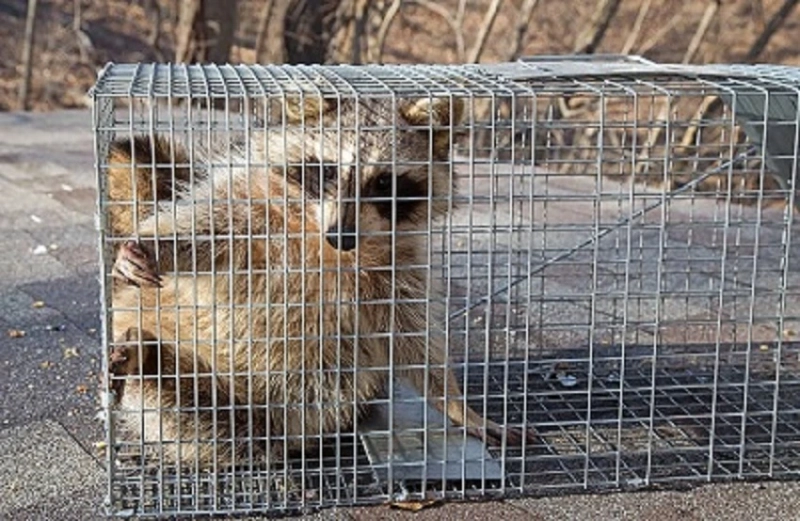Encountering wildlife around your home can be more than just an inconvenience. It can lead to significant damage and potential health risks. Nuisance animal control is the process designed to manage these unwanted animal intrusions effectively. From pesky raccoons rummaging through your attic to skunks causing chaos in your garden. These animals can disrupt your daily life and compromise your property. In this blog, we'll explore the essentials of nuisance animal control. Including why it's necessary. Understanding this process will help you protect your home. Maintain a safe, comfortable environment.
What is Nuisance Animal Control?
Nuisance animal control refers to the methods and strategies used to manage and remove animals. That is causing issues. These animals can include a variety of species. From rodents and birds to larger wildlife like raccoons or skunks. The goal of nuisance animal control is to address the problem in a way that is safe. Humane, and effective.
Why Nuisance Animal Control is Important:
There are several reasons why nuisance animal control is crucial:
Preventing Property Damage: Animals like squirrels, raccoons. Opossums can cause significant damage to homes. They might chew through wiring, insulation. Even structural elements, leading to costly repairs.Health Risks: Many nuisance animals can carry diseases that pose health risks to humans and pets. For example, rodents can spread hantavirus, while raccoons might carry rabies.Minimizing Disruption: Animals can be noisy and disruptive, especially at night. They can create disturbances that affect your quality of life and disrupt your peace.Protecting Pets: Wild animals can pose a threat to pets. A raccoon or skunk might attack a dog or cat, leading to injuries or disease transmission.Common Nuisance Animals:
Understanding which animals might be causing problems is the first step in effective nuisance animal control. Here are a few common culprits:
Rats and Mice: These rodents are infamous for invading homes. Particularly in search of food. They can be difficult to get rid of. They are known for causing damage and spreading diseases.Squirrels: Squirrels are known for nesting in attics or chimneys. They can cause damage by chewing on electrical wires and insulation.Raccoons: Raccoons are clever and persistent. They can break into garbage cans, attics, and other spaces. Their presence can also lead to significant property damage.Skunks: Skunks are usually a nuisance due to their strong odor. They can also dig up yards and gardens in search of food.Birds: Certain birds, like pigeons, can become a problem when they nest in undesirable areas. Such as roof eaves or vents.How Does Nuisance Animal Control Work?
Nuisance animal control typically involves several steps to address the problem effectively. Here’s an overview of the process:
Assessment and Inspection: The first step in nuisance animal control is assessing the problem. This involves inspecting the property to identify the type of animal causing the nuisance. Determining how they are getting inside. A thorough inspection helps in understanding the extent of the issue. Planning the appropriate control measures.Exclusion: Once the problem has been assessed, the next step is exclusion. This involves sealing off entry points to prevent animals from getting inside. For instance, if squirrels are entering through a hole in the roof. That hole needs to be repaired to stop their access. Exclusion is a critical part of nuisance animal control because it prevents future invasions.Trapping and Removal: After exclusion, trapping and removal are used to capture and remove the animals. There are various types of traps available. The choice depends on the type of animal and the specific situation. For instance, live traps might be used to capture and release animals like raccoons. While other methods might be used for different species.Clean-Up and Repair: Once the animals have been removed. It’s essential to clean up any mess they may have left behind. This might include removing droppings. Nesting materials, and other debris. Additionally, any damage caused by the animals should be repaired. This step is important for ensuring that the property is returned to a safe and healthy condition.Prevention: The final step in nuisance animal control is prevention. This involves taking measures to ensure that the animals do not return. This might include additional exclusion measures. Such as installing barriers or using repellents. Regular inspections can also help in maintaining a nuisance-free environment.Nuisance animal control is an essential service for managing unwanted wildlife. Protecting your property and health. By understanding the process and the common types of nuisance animals. You can better appreciate the importance of effective control measures. Whether you choose to handle the problem yourself or seek professional help. Addressing nuisance animals promptly and thoroughly is crucial. It helps in maintaining a safe and comfortable living environment.


